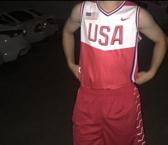
Review on Linksys Velop AC1200 Dual-Band Whole Home WiFi Intelligent Mesh System, 3-Pack Black (Discontinued by Manufacturer) - Find Limited Stock Now! by Paul Zimmer

The signal is too weak for large houses and the stability is questionable
Because I have a large house, I previously had three different mesh systems to overcome the annoying delays of the WiFi extenders: Orbi by Netgear, Deco by TP-LINK and Tri-Band by Linksys Velop. Velop's dual-band mesh wireless system operates closer to TP-LINK Deco than its larger tri-band relative, mainly because its antenna range is limited, affecting stability. (Scroll down to the comparison section for more info on all of these systems.) If you have a traditional two-story home under 3,000 feet, this might work; However, today's most powerful routers can span this range without an extender. The nodes are small, 5.5 inches high and 2.5 inches at the base. I have tested this mesh system both as a standalone wireless network and, after a reset, as additional nodes added to my Velop Tri-Band system. Whether they are standalone or added nodes, each device's signal strength is so limited that each must be placed close together, negating the benefits of a mesh network. (I have a large house that spans three floors and I didn't expect them to cover the entire area; I placed them to only cover part of it.) I couldn't get the nodes to to connect reliably, not even directly to ground. or lower in a relatively open floor plan. The only way to connect was to put them on the same floor, in a room or something. As long as the nodes are close enough together, they're easy to set up using the Linksys iOS app. Connect the first - either one because they're identical - to your cable modem with the supplied ethernet cable, plug it in and you're good to go. The app walks you through each step, including naming your wireless network and setting up the password. After configuring the first module, go through the configuration of each node. If the node is too far away, you will see a solid red light after setup is complete. If it's too far away but still within range, you'll see a yellow light. You want to aim for a solid blue light. The problem is that even if I'm getting a constant blue light, the device might turn off unexpectedly. As far as I could tell the only way to get it back online was to reboot. While the signal covered other floors, distance from the nodes resulted in slower internet speeds. I quickly switched to using them as add-ons to the Velop Tri-Band but still ran into issues. Even though the Velop Tri-Band covers my entire house and patio, the signal strength in my office was weak enough to slow down my connection because the Velop insists on connecting my computer at 5GHz, a frequency that isn't that wide ranges like 2 0.4 GHz. Even though the tri-band node is in the room directly above my office, I thought I would get a better and faster signal with the dual-band node. It took me HOURS to connect this node even though the WiFi signal from the tri-band node was strong enough for my computer to stream, albeit not as smoothly as I'd like at times. I turned it down and miraculously it connected overnight. And then he went for a while. Then he connected. Some of the other nodes also turned blue after the setup was complete, only to inexplicably turn red and shut down, although nothing has changed. What's even weirder is that the app sometimes tells me the node is offline even though it's solid blue. I concluded that the antennas on these nodes are insufficient (worse than on my computer) to create a reliable mesh system. However, I like that because of my tri-band system, even if the node fails, I still have a connection to the Velop system, only at lower speeds. I keep tri-bands in critical spots to ensure the best possible coverage; Dual-band nodes enhance the original system when working correctly. MESH SYSTEM COMPARISON: Having used the Orbi and Deco in addition to the two Velop systems, I thought a comparison might help consumers. Setup was easy for everyone via their respective apps. I had good luck with Deco for about a year before I started having connection issues, either due to a firmware update or because the devices were prone to a second disconnect, thanks to my cable company, which resulted in each device rebooting within a period of time to me like an infinite time. Deco was great because each knot was little more than three studs stacked on top of each other, and they could be placed almost anywhere without drawing attention. Like the Velop Dual Band, this system had the downside of requiring a lot of knots to cover my house. The Orbi Tri-Band was a much more stable and capable system, similar to the Velop Tri-Band, but each satellite (they're not all the same) was huge and visible wherever I placed them. The Orbi covered almost the same area as the Velop Tri-Band and was just as stable. I later cursed myself for abandoning it in favor of Deco when the Deco system became unstable. But Orbi was ugly. The Velop Tri-Band is the system I think works best for a large home. It's stable, with good coverage and speed, although a node that's on the edge of the main node's signal, even if it's constantly blue, will reduce network speeds for devices connected to it. The knots are larger than this double band, although still relatively small at 7 1/4 inches high. However, all of these systems are superior to a traditional router in combination with an extender or two. It's a dual-band version that just isn't powerful enough for the 4,500 square feet it claims. — Debbie Lee Wesselman
- Easy to read control panel
- Sad equipment
New products
Comments (0)
Top products in 🏠 Whole Home & Mesh Wi-Fi Systems
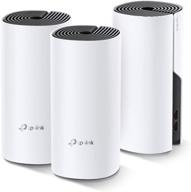
Experience Seamless WiFi with TP-Link Deco Whole Home Mesh System - 📶 Covering 5,500 Sq.ft with Parental Controls, Alexa compatibility & Gigabit Ports (Deco M4 3-Pack)

24 Review

Wi-Fi Mesh system Tenda MW3-3, white

18 Review
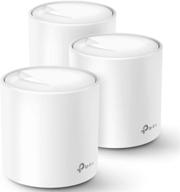
TP-Link Deco X60: Ultimate Whole-Home Mesh Wi-Fi3-Pack with WiFi 6 AX3000

19 Review
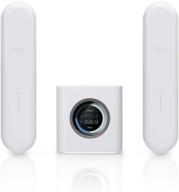
AmpliFi HD WiFi System: Whole Home Coverage, HD Router, 2 Mesh Points

33 Review
Another interesting products
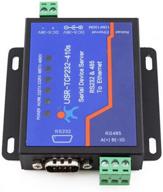
🔌 USR-TCP232-410s: RS232/RS485 Serial to Ethernet Adapter/IP Device Server with DHCP/DNS Support

4 Review
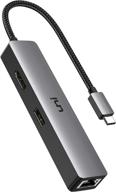
🔌 uni USB C Hub with Ethernet Adapter, 4K HDMI, Gigabit Ethernet, and 3 USB 3.0 Ports for MacBook Pro, iPad Pro, XPS

11 Review
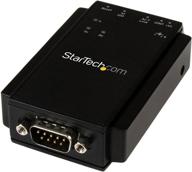
🔌 StarTech.com NETRS232 Serial to IP Ethernet Device Server - DIN Rail Mountable - Serial Device Server - Serial Over IP Device Server (Black)

4 Review
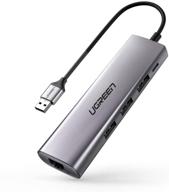
UGREEN USB 3.0 Ethernet Adapter Hub with RJ45: Fast Gigabit Ethernet Converter, 3 Ports USB 3.0 Hub Compatible for MacBook, iMac, Surface Pro, Chromebook, Laptop, PC

11 Review

